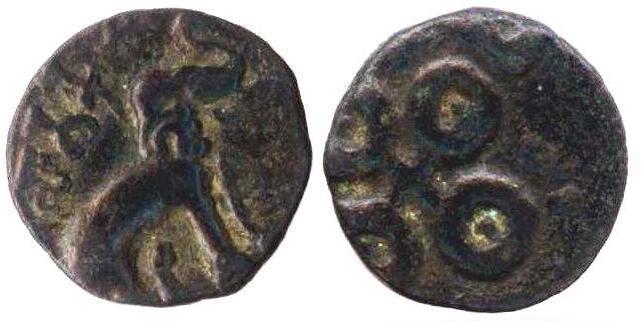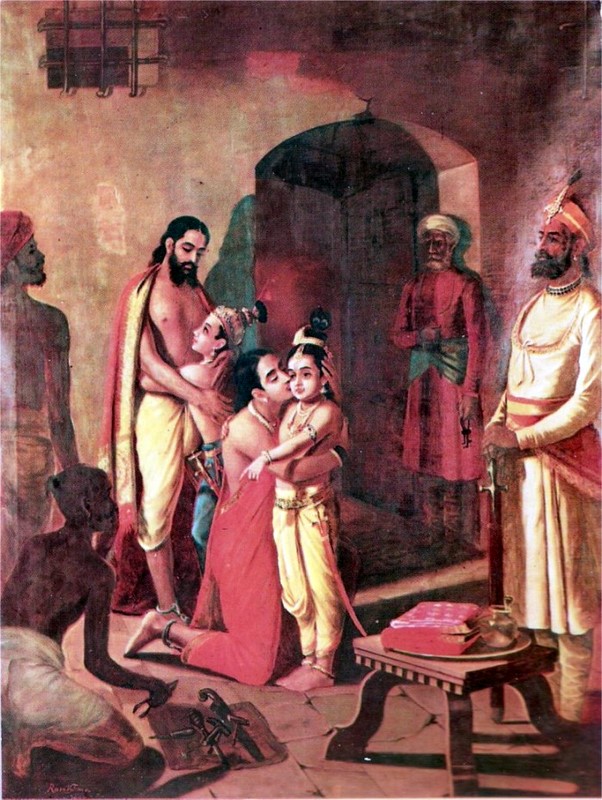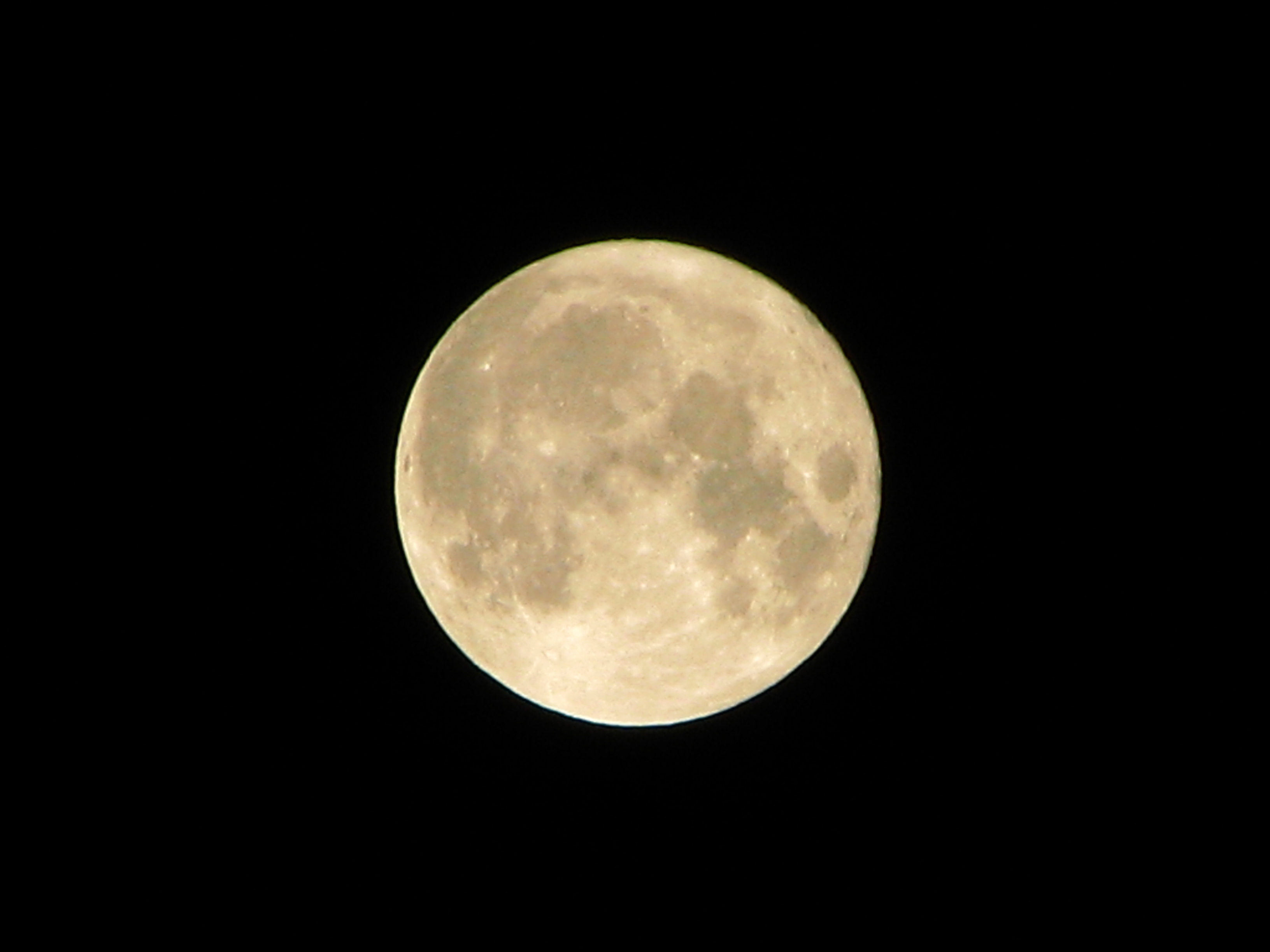|
Naneghat
Naneghat, also referred to as Nanaghat or Nana Ghat (IAST: Nānāghaṭ), is a mountain pass in the Western Ghats range between the Konkan coast and the ancient town of Junnar in the Deccan plateau. The pass is about north of Pune and about east from Mumbai, Maharashtra, India. It was a part of an ancient trading route, and is famous for a major cave with Sanskrit inscriptions in Brahmi script and Middle Indo-Aryan dialect. These inscriptions have been dated between the 2nd and the 1st century BCE, and attributed to the Satavahana dynasty era. The inscriptions are notable for linking the Vedic and Hinduism deities, mentioning some Vedic srauta rituals and of names that provide historical information about the ancient Satavahanas. The inscriptions present the world's oldest numeration symbols for "2, 4, 6, 7, and 9" that resemble modern era numerals, more closely those found in modern Nagari and Hindu-Arabic script. [...More Info...] [...Related Items...] OR: [Wikipedia] [Google] [Baidu] |
Satavahana
The Satavahanas (; ''Sādavāhana'' or ''Sātavāhana'', IAST: ), also referred to as the Andhras (also ''Andhra-bhṛtyas'' or ''Andhra-jatiyas'') in the Puranas, were an ancient Indian dynasty. Most modern scholars believe that the Satavahana rule began in the late 2nd century BCE and lasted until the early 3rd century CE, although some assign the beginning of their rule to as early as the 3rd century BCE based on the Puranas, but uncorroborated by archaeological evidence. The Satavahana kingdom mainly comprised the present-day Andhra Pradesh, Telangana, and Maharashtra. At different times, their rule extended to parts of modern Gujarat, Madhya Pradesh, and Karnataka. The dynasty had different capital cities at different times, including Pratishthana (Paithan) and Amaravati ( Dharanikota). The origin of the dynasty is uncertain, but according to the Puranas, their first king overthrew the Kanva dynasty. In the post- Maurya era, the Satavahanas established peace in the Dec ... [...More Info...] [...Related Items...] OR: [Wikipedia] [Google] [Baidu] |
Satakarni
Satakarni (also called Sātakarnī I, Brahmi script: 𑀲𑀸𑀢𑀓𑀡𑀺, ''Sātakaṇi'') was the third of the Satavahana kings, who ruled the Deccan region of India. His reign is generally dated to 70-60 BCE, although some authors have claimed 187-177 BCE, and most recently dated to 88-42 BCE. It was thought there were "two Satakarnis" (Satakarni I and Satakarni II), however, Andrew Ollett argues that there is only one Satakarni, as the alleged first Satakarni is assigned ten years, and the second, fifty years by other scholars, but the only dated inscription of this king is Candankheda seal from his reign's year 30, around 60 BCE, and he ruled ca. 88-42 BCE. Biography According to the Puranas, the Satavahana king Simuka was succeeded by his brother Krishna (also known as Kanha). According to ''Matsya Purana'', Krishna was succeeded by Mallakarni, but according to other Puranas, he was succeeded by Satakarni. The Nanaghat cave inscription of Satakarni lists his family ... [...More Info...] [...Related Items...] OR: [Wikipedia] [Google] [Baidu] |
Junnar
Junnar (Marathi pronunciation: ͡ʒunːəɾ is a city in the Pune district of the Indian state of Maharashtra. The city has history dating back to the first millennium. The nearby fort of Shivneri was the birthplace of Maratha king Shivaji, the founder of the Maratha Empire. Junnar was declared the first tourism taluka in Pune district by the government of Maharashtra on 9 January 2018. History Junnar has been an important trading and political centre for the last two millennia. The town is on the trade route that links the ports of western India or more specifically of Konkan with Deccan interiors. The first mention of Junnar comes the Greco-Roman travellers from the first millennium, The Indo-Scythian Western Satraps ruled at Junnar during the 2nd century CE as shown by their cave inscriptions in the area of Junnar, at Manmodi Caves. "Yavana" Greeks also left donative inscriptions in the 2nd century CE at Lenyadri and Manmodi Caves. According to Damodar Kosambi, the ... [...More Info...] [...Related Items...] OR: [Wikipedia] [Google] [Baidu] |
Vasudeva
Vasudeva (; Sanskrit: वसुदेव ), also called Anakadundubhi (''anakas'' and ''dundubhis'' both refer to ''drums'', after the musicians who played these instruments at the time of his birth), is the father of the Hindu deities Krishna ( Vāsudeva, i.e. "son of Vasudeva"), Balarama, and Subhadra. He was a king of the Vrishnis. His sister Kunti was married to Pandu. The patronymic ' (with a pronounced ''ā'') is a popular name of Krishna, the son of Vasudeva and Devaki. "Vāsudeva" is a vṛddhi, a derivative of the short form "Vasudeva", a linguistic pragmatic in Sanskrit signifying "of, belonging to, descended from". "Vasudeva" as an object of worship in Hinduism usually refers to the son (Krishna), rather than his father Vasudeva. Family Vasudeva was born to the Yadava king Shurasena in the Surasena kingdom of Khandalwansha. Vasudeva had many brothers such as Devashrava and Devabhaga, and 5 sisters Srutakirti, Kunti, Rajadhidevi, Srutadeva (Mother of the ... [...More Info...] [...Related Items...] OR: [Wikipedia] [Google] [Baidu] |
Maharashtra
Maharashtra () is a state in the western peninsular region of India occupying a substantial portion of the Deccan Plateau. It is bordered by the Arabian Sea to the west, the Indian states of Karnataka and Goa to the south, Telangana to the southeast and Chhattisgarh to the east, Gujarat and Madhya Pradesh to the north, and the Indian union territory of Dadra and Nagar Haveli and Daman and Diu to the northwest. Maharashtra is the second-most populous state in India, the third most populous country subdivision in South Asia and the fourth-most populous in the world. The state is divided into 6 divisions and 36 districts. Mumbai is the capital of Maharashtra due to its historical significance as a major trading port and its status as India's financial hub, housing key institutions and a diverse economy. Additionally, Mumbai's well-developed infrastructure and cultural diversity make it a suitable administrative center for the state, and the most populous urban are ... [...More Info...] [...Related Items...] OR: [Wikipedia] [Google] [Baidu] |
Dharma
Dharma (; , ) is a key concept in various Indian religions. The term ''dharma'' does not have a single, clear Untranslatability, translation and conveys a multifaceted idea. Etymologically, it comes from the Sanskrit ''dhr-'', meaning ''to hold'' or ''to support'', thus referring to law that sustains things—from one's life to society, and to the Universe at large. In its most commonly used sense, dharma refers to an individual's moral responsibilities or duties; the dharma of a farmer differs from the dharma of a soldier, thus making the concept of dharma a varying dynamic. As with the other components of the Puruṣārtha, the concept of ''dharma'' is pan-Indian. The antonym of dharma is ''adharma''. In Hinduism, ''dharma'' denotes behaviour that is considered to be in accord with ''Ṛta''—the "order and custom" that makes life and universe possible. This includes duties, rights, laws, conduct, virtues and "right way of living" according to the stage of life or social posi ... [...More Info...] [...Related Items...] OR: [Wikipedia] [Google] [Baidu] |
Vedic Mythology
The historical Vedic religion, also called Vedism or Brahmanism, and sometimes ancient Hinduism or Vedic Hinduism, constituted the religious ideas and practices prevalent amongst some of the Indo-Aryan peoples of the northwest Indian subcontinent (Punjab and the western Ganges plain) during the Vedic period ( 1500–500 BCE). These ideas and practices are found in the Vedic texts, and some Vedic rituals are still practised today. The Vedic religion is one of the major traditions which Origins of Hinduism, shaped modern Hinduism, though present-day Hinduism is significantly different from the historical Vedic religion. The Vedic religion has roots in the Indo-Iranians, Indo-Iranian culture and religion of the Sintashta culture, Sintashta ( 2200–1750 BCE) and Andronovo culture, Andronovo ( 2000–1150 BCE) cultures of Eurasian Steppe. This Indo-Iranian religion borrowed "distinctive religious beliefs and practices" from the non-Indo-Aryan Bactria–Margiana Archaeological Compl ... [...More Info...] [...Related Items...] OR: [Wikipedia] [Google] [Baidu] |
Chandra
Chandra (), also known as Soma (), is the Hindu god of the Moon, and is associated with the night, plants and vegetation. He is one of the Navagraha (nine planets of Hinduism) and Dikpala (guardians of the directions). Etymology and other names The word "Chandra" literally means "bright, shining or glittering" and is used for the "Moon" in Sanskrit and other Indo-Aryan languages.''Graha Sutras'' by Ernst Wilhelm, published by Kala Occult Publishers p. 51 It is also the name of various other figures in Hindu mythology, including an asura and a Suryavamsha king. It is also a common Indian name and surname. Both male and female name variations exist in many South Asian languages that originate from Sanskrit. Some of the synonyms of Chandra include ''Soma'' (distill), ''Indu'' (bright drop), ''Atrisuta'' (son of Atri), ''Shashin'' or ''Shachin'' (marked by hare), ''Taradhipa'' (lord of stars) and ''Nishakara'' (the night maker), ''Nakshatrapati'' (lord of the Nakshatra), '' ... [...More Info...] [...Related Items...] OR: [Wikipedia] [Google] [Baidu] |
Indra
Indra (; ) is the Hindu god of weather, considered the king of the Deva (Hinduism), Devas and Svarga in Hinduism. He is associated with the sky, lightning, weather, thunder, storms, rains, river flows, and war. [3 volumes] Indra is the most frequently mentioned deity in the ''Rigveda''. He is celebrated for his powers based on his status as a god of order, and as the one who killed the great evil, an Asura (Hinduism), asura named Vritra, who obstructed human prosperity and happiness. Indra destroys Vritra and his "deceiving forces", and thereby brings rain and sunshine as the saviour of mankind. Indra's significance diminishes in the post-Vedic Indian literature, but he still plays an important role in various mythological events. He is depicted as a powerful hero. According to the ''Vishnu Purana'', Indra is the title borne by the king of the gods, which changes every Manvantara – a cyclic period of time in Hindu cosmology. Each Manvantara has its own Indra and the In ... [...More Info...] [...Related Items...] OR: [Wikipedia] [Google] [Baidu] |
Georg Bühler
Professor Johann Georg Bühler (19 July 1837 – 8 April 1898) was a German scholar of ancient Indian languages and law. Early life and education Bühler was born to Rev. Johann G. Bühler in Borstel, Hanover, attended grammar school in Hanover, where he mastered Greek and Latin, then university as a student of theology and philosophy at Göttingen, where he studied classical philology, Sanskrit, Zend, Persian, Armenian, and Arabic. In 1858 he received his doctorate in eastern languages and archaeology; his thesis explored the suffix ''-tês'' in Greek grammar. That same year he went to Paris to study Sanskrit manuscripts, and in 1859 onwards to London, where he remained until October 1862. This time was used mainly for the study of the Vedic manuscripts at the India Office and the Bodleian Library at Oxford University. While in England, Bühler was first a private teacher and later (from May 1861) assistant to the Queen's librarian in Windsor Castle. Academic career In Fall 1 ... [...More Info...] [...Related Items...] OR: [Wikipedia] [Google] [Baidu] |





